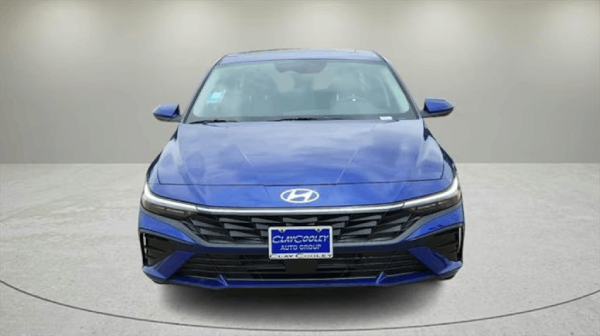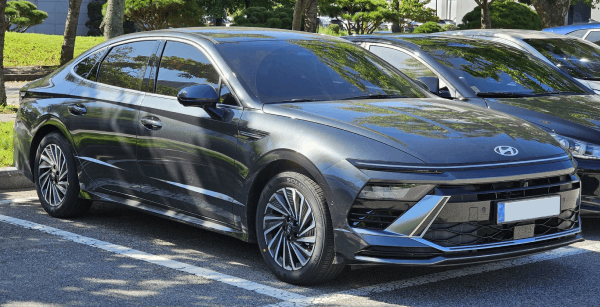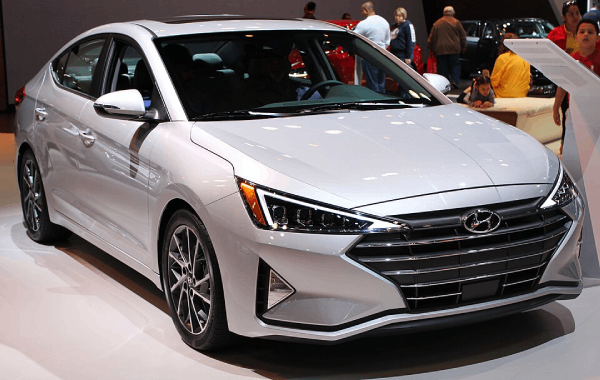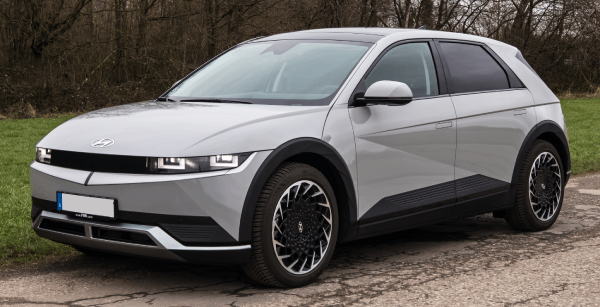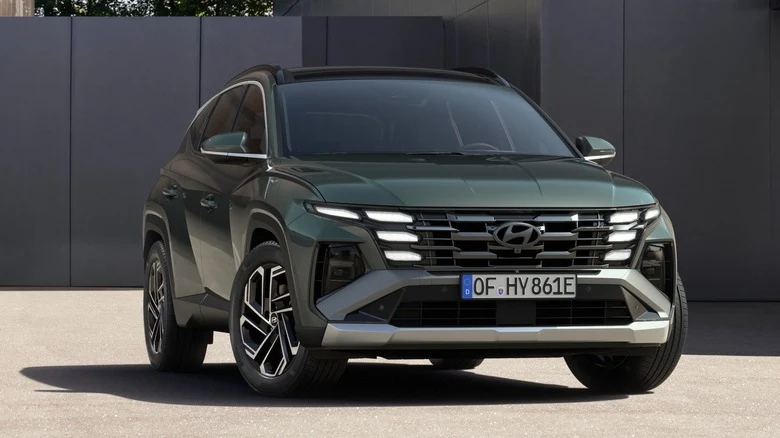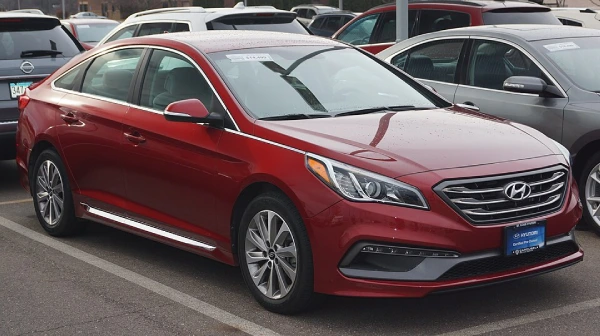overview
Since it’s now the de facto entry point for many automakers that either abandoned small cars (Ford) or never had them (Jeep), the subcompact SUV segment is booming. Just look at the latest models of the Honda HR-V, Mazda CX-30, and Chevrolet Trax to see how the top SUVs in this market are getting bigger as it develops. Additionally, the cost of these entry-level SUVs has increased, with the exception of the Chevy. Hyundai’s new 2024 Kona, which is marginally less expensive than the previous model but noticeably better and larger, joins the Trax in defying the price-size trend. That is, with a major disclaimer that we will discuss shortly.
We’re working through the remainder of the lineup after evaluating a 2024 Hyundai Kona N-Line variant at this year’s Motor Trend SUV of the Year event. The 2024 Hyundai Kona Limited with optional all-wheel drive is the next vehicle in our comprehensive testing routine. It is the most expensive non-electric Kona available and sits at the top of the gas-powered Kona series. (Note: The Kona EV is priced higher than the gas-powered models.) With the same new eight-speed automatic gearbox and the same carryover turbocharged 1.6-liter I-4 engine that produces 190 horsepower and 195 lb-ft of torque as the N-Line, the Limited is a better all-arounder with a wider appeal. It also has a more gentle suspension.
the Good Hyundai Kona
Every 2024 Hyundai Kona, including the standard SE and SEL, N-Line, Limited, and electrified models, has a 2.3-inch wheelbase and incorporates futuristic full-width front and back lights. (The front light bar functions as the Kona’s running lamp; similar to the previous Kona, the lower headlight parts handle actual headlighting tasks when the vehicle is moving, with the center portion not lighting.. Angular fender bulges give the Kona a sleek, contemporary appearance and coordinate with smaller trim elements along the exterior that have a triangle concept. Our test Kona’s non-EV status surprised a number of petrol station commenters, which is a clear indication that Hyundai’s design team did a fantastic job.
The actual Kona EV has a very identical appearance to the electric vehicle, and Hyundai built the Kona family around the EV for this generation, with the petrol models coming after the electric model instead of the other way around. The wheelbase increase has made the interior of all of them larger, with the cargo area expanding from 6.3 cubic feet to 25.5 cubes and the rear passengers enjoying 3.1 inches of additional legroom.
However, the construction of each Kona varies. A mediocre 2.0-liter I-4 engine powers the base SE and midlevel SEL Konas without the help of a turbocharger. Additionally, those Konas have more conventional interior designs, with a shift lever situated on the console that provides less storage space than the electronic steering-column stalk shifters seen in the N-Line, EV, and Limited models. These versions come with retractable cupholders and open console bins.
The shifter’s end is a twist knob, similar to the one seen in Hyundai’s electric Ioniq models; moving forward and backward activates drive and reverse, while pressing the knob’s end enters park. It’s a good thing it feels so solid because novices will undoubtedly tug on the entire stalk instead, thinking it’s the wand-like component used in older Teslas or an antiquated column shifter. It’s quick and simple to operate once you know where the knob is, and it’s conveniently next to the steering wheel.
Drivers are also pleased with the power plant it uses. Hyundai substituted a conventional torque-converter eight-speed auto gearbox with the seven-speed dual-clutch automatic seen in the previous turbo variants for this second-generation Kona. This smooths shift action over the jerkier dual-clutch from last year and considerably dulls the 1.6-liter I-4’s jumpy off-the-line behavior. The gearbox smoothly shifts into subsequent gears instead of slamming into them like the old dual-clutch unit did, although dipping into the throttle too suddenly still produces a lumpy burst of midrange engine output. Though most consumers won’t drive this commuter hard enough to notice, there is still more work to be done because the eight-speed takes a while to downshift.
It should come as no surprise that the 2024 Hyundai Kona Limited is slower than the previous model, with the same output, a less sporty gearbox, and an additional 200 pounds of heft due to its longer length. In our tests, the Limited took 0.7 seconds to reach 60 mph, which was 0.4 seconds slower than a 2022 Kona N-Line. The 2024 N-Line also fared worse than its predecessor, taking 8.5 seconds to reach 60 mph, which was comparable to Chevrolet’s 137-hp, three-cylinder Trax. Even with its surging, we still enjoy this engine since it is willing and smooth, which makes driving the Kona much more enjoyable than the daily 2.0-liter in the SE and SEL models.
Even if the 2024 Hyundai Kona Limited’s skidpad grip and braking distance from 60 mph fell short of the previous model’s records (to a class-average 118 feet and 0.83 g), the small SUV really drives well thanks to its firm brake pedal action and squirty, enjoyable driving style. In addition to having very low over-the-road noise levels, it has enough body lean in corners and suppleness to its ride motions to appear sophisticated. The Kona’s bustling behavior over noticeably poor pavement hasn’t been fixed by Hyundai, either; washboard surfaces still show a lack of dampening, particularly on rebound, so you’ll feel some wheel hop and a leaping sensation following larger-amplitude events like speed bumps.
The Less Good Hyundai Kona
We don’t have many grievances with the Kona itself. The two 12.3-inch screens in the redesigned interior look fantastic and function in the same simple way as they do in all of the other Hyundai products that use them (many). These screens, along with the well-integrated LED ambient lighting, enhance the Kona’s interior and help you forget about the harsh plastics on the door panels, just like in more current, less expensive GM models. The new digs are not only aesthetically pleasing but also highly functional, as evidenced by the abundance of physical controls on the center console and dashboard, such as tuning knobs and volume dials. Even though there is only a minor improvement in front passenger room, the cabin feels much larger than the previous Kona’s; the rear area is substantially better and much more adult-friendly. One disadvantage? It took some back-straining Tetris for us to fit a car seat in there, even though the rear door openings were longer and the back seat was more spacious.
Where is the culpability of the Kona, then? Cost. But hold on, didn’t we mention at the outset that its price hadn’t skyrocketed like that of certain rivals? Yes, in theory, but only the N-Line and Limited models have the turbo engine, making the N-Line the de facto entry-level pricing for a Kona you’d really want at $31,985 MSRP, plus an additional $1,500 for all-wheel drive. That is at least a grand more than the most expensive comparable Honda HR-V or Toyota Corolla Cross, and it is a far cry from the SE’s $25,453 basic price. Installing AWD and carpeted floor mats on our test car elevates the starting price of this limited edition to $34,695. That is definitely a one-size-up compact SUV.
The 2024 Hyundai Kona’s striking exterior, well-designed interior, turbocharged engine, and extensive feature set (including leather, heated steering wheel, heated and ventilated front seats, navigation, automatic climate control, a full range of active safety features, and more) all work to make the price difference seem reasonable. However, at $35K, this is still a popular subcompact SUV. Therefore, keep in mind that those prices aren’t unaffordable before accusing us of shouting into thin air about rising new car prices once more. Chevrolet demonstrates its affordability with the bigger Trax, a plus-sized, turbocharged vehicle in the same class as the Kona that boasts even more internal room, more pronounced styling, and a better ride. Indeed, the Hyundai outperforms it in terms of power and has AWD, whereas the Chevy does not, and the Limited has amenities found in luxury cars. However, it also costs almost $10,000 more than the most expensive Trax, which is a significant amount of money for consumers in this market.
specifications for the 2024 Hyundai Kona HTRAC 1.6T
| Feature | Specification |
| Base Price | $34,485 |
| Price as Tested | $34,695 |
| Vehicle Layout | Front-engine, AWD, 5-pass, 4-door SUV |
| Engine | 1.6L turbo direct-injected DOHC 16-valve I-4 |
| Power (SAE NET) | 190 hp @ 6,000 rpm |
| Torque (SAE NET) | 195 lb-ft @ 1,700 rpm |
| Transmission | 8-speed automatic |
| Curb Weight (F/R DIST) | 3,458 lb (59/41%) |
| Wheelbase | 104.7 in |
| Dimensions (L x W x H) | 171.3 x 71.9 x 63.4 in |
| 0-60 MPH | 7.7 sec |
| Quarter Mile | 16.0 sec @ 89.2 mph |
| Braking (60-0 MPH) | 118 ft |
| Lateral Acceleration | 0.83 g (avg) |
| MT Figure Eight | 27.2 sec @ 0.62 g (avg) |
| EPA CITY/HWY/COMB FUEL ECON | 24/29/26 mpg |
| EPA RANGE, COMB | 343 miles |
| On Sale | Now |


